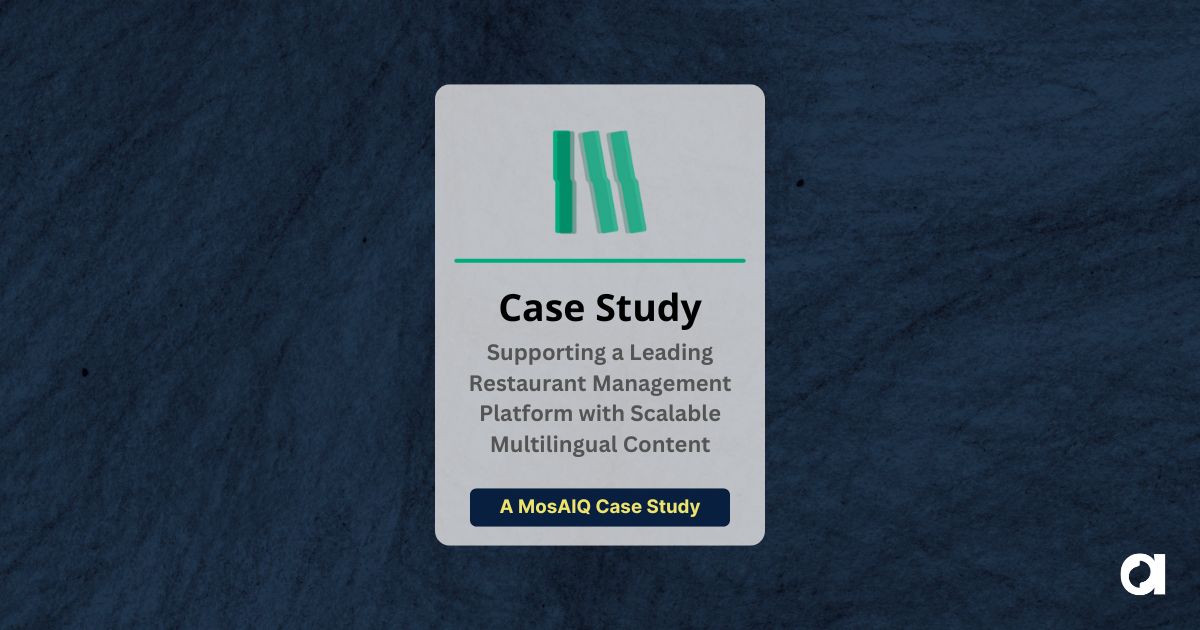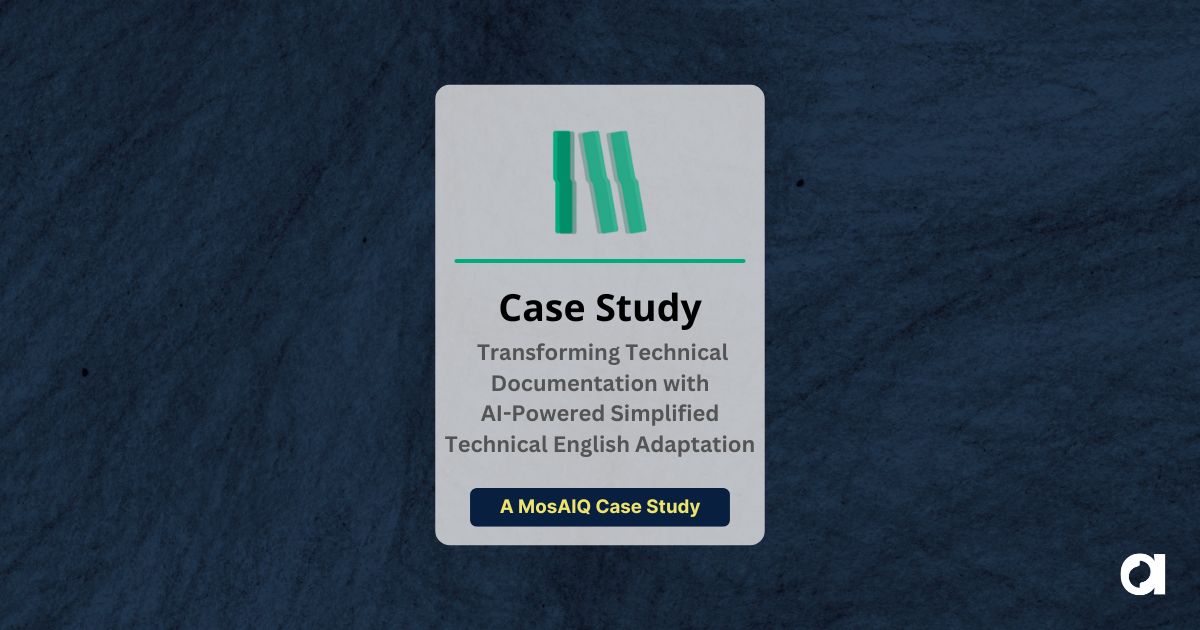Patient information leaflets (PILs) are found in medication packages and provide information about the medication and its use. Adapting these materials to a patient’s language and culture ensures they understand healthcare instructions better, leading to improved adherence to treatment plans, fewer dosing and prescription errors, and enhanced patient safety.
Pharmaceutical companies can significantly improve the clarity and efficacy of patient information by localizing their PILs to their recipients’ needs. This approach enhances health outcomes and builds greater trust between patients and healthcare providers.
Let’s take a closer look at the essential elements of a PIL, the importance of localization, and how well-written PILs can improve patient care.
Why Localized Patient Information Leaflets Make a Difference
PILs are designed to help patients understand the safe and effective use of their medication. By providing easy-to-understand, well-structured information, PILs empower recipients to take an active role in their treatment and managing their health.
However, the effectiveness of PILs is influenced by their design and the quality of their content. Inconsistent or overly complex information can lead to confusion and apprehension. For instance, studies have shown that when PILs contain excessive medical jargon or an overwhelming amount of side effects, patients may experience increased anxiety and may even discontinue their medication without consulting their doctors. Conversely, PILs that are clear and concise can improve patient adherence to treatment plans, reducing the likelihood of complications and improving overall health outcomes.
Lost in Translation: The Risks of Non-Localized Health Information
Language barriers undermine the point of PILs—to deliver accurate information that can be easily understood. When PILs are only available in a single language, patients may not understand their medical instructions—and that’s when things go awry.
Studies have shown patients with limited English proficiency (LEP) are more prone to medication errors, missed appointments, and failure to follow treatment plans, exacerbating health conditions and causing emergency situations. This persistent dilemma affects patient outcomes, results in longer hospital stays and higher readmission rates, and strains limited healthcare resources.
One in five U.S. households speaks a language other than English at home, underscoring the necessity for meaningful language services in healthcare settings. Utilizing bilingual healthcare professionals, interpreter services, and translated PILs ensures clear and accurate communication by health practitioners.
Essential Elements of a Patient Information Leaflet
PILs typically include elements such as the identification of the medication, detailing both the brand and generic names, and the form it takes (e.g., tablet, device, liquid). The composition section lists active and inactive ingredients, crucial for patients to identify potential allergens and avoid adverse reactions. Therapeutic indications explain the uses of the medicine, while dosage and administration instructions offer guidance on how to use it properly. Additionally, PILs include critical information on contraindications, warnings, and precautions, as well as potential side effects and interactions with other substances.
This structured approach ensures patients have the necessary information to use their prescriptions safely.
Cracking the Code: Important Factors in PIL Localization
Pharmaceutical and prescription information is complex, and patients’ health depends on understanding it correctly. Effective PIL creation in other languages requires attention to several factors:
Accurate Medical Terminology Translation
Precise translation of medical terms is crucial for patient safety and understanding. To ensure accuracy and social relevance, this is achieved by collaborating with medical professionals who are native speakers of the target language.
Cultural Adaptation
Modify content to address community-based sensitivities, taboos, and local healthcare practices. This includes adapting imagery, design elements, and examples to resonate with the target audience.
Clear and Simple Language
Use straightforward language that’s easily understood by patients with varying levels of health literacy. Avoid jargon and complex sentence structures that may cause confusion.
Localized Units and Dosages
Adapt dosage instructions and measurements to local systems. For instance, convert imperial units to metric where appropriate.
Appropriate Visual Aids
Incorporate suitable visual elements to enhance understanding. Use universally recognized medical symbols when possible.
Strategies and Best Practices for Successful PIL Localization
Creating effective multilingual PILs requires a systematic approach that addresses linguistic, cultural, and regulatory challenges. Consider these strategies:
Collaboration with Healthcare Professionals
Work closely with local healthcare providers to ensure the localized content aligns with regional medical practices and regulations.
User Testing
Conduct thorough testing with target patient groups to identify any areas of confusion. Use feedback to refine the localized PILs.
Regular Updates
Establish a system for regular reviews and updates to reflect changes in medical guidelines, drug information, or local regulations.
Quality Assurance Process
Implement a robust quality process that includes expert review and patient feedback mechanisms to ensure the highest standards of accuracy and clarity.
Overcoming Challenges When Localizing PILs
Localizing PILs for global audiences presents unique challenges that require careful attention. One primary challenge is maintaining clarity while adhering to regulatory requirements. Pharmaceutical regulations can vary across countries, so collaborating with local regulatory experts to ensure compliance is a must.
As we’ve mentioned, cultural adaptation is one of the most important considerations, but it also poses another significant hurdle. Different societies have distinct perspectives on health and medicine, requiring content to align with local norms and healthcare practices.
This extends to visual elements, where appropriate and inclusive imagery must be used to enhance understanding and appeal across local populations. For example, color usage might need adjustment; while the color white is often associated with cleanliness and purity in Western cultures, it might be associated with mourning and funerals in some Asian cultures.
In some cultures, openly discussing mental health is stigmatized. A PIL for an antidepressant might need to use more discreet language and emphasize privacy and confidentiality in such regions, whereas in other cultures, a straightforward discussion about mental health would be more appropriate.
Successfully localizing PILs means addressing the unique linguistic challenges of different patient populations. By simplifying complex medical terminology, adapting to local norms, and incorporating relevant visuals and language, PILs become more accessible and understandable.
Using Language Technology to Augment PILs
Advancements in technology have helped to streamline localization of PILs. Translation memory ensures consistency across documents and expedites updates by reusing previously translated content, enhancing accuracy and accelerating timelines. Combining machine translation with human post-editing boosts efficiency while maintaining quality, enabling rapid and reliable translation.
Additionally, digital platforms like content management systems (CMS), enable easier distribution and management of electronic PIL documents. These systems support quick updates, multilingual access, and the integration of accessibility features such as text-to-speech and adjustable font sizes. AI and machine learning technologies further support localization by enhancing productivity and ensuring quality.
Getting the Message Across: Measuring Localization’s Impact
Measuring the impact of localized PILs is essential to ensure they meet patient needs and support positive health outcomes. Key metrics include patient comprehension and medication adherence rates, assessed through tests and monitoring before and after localization. Patient satisfaction surveys and feedback from clinicians are also useful, offering insights into the clarity and usefulness of the PILs. Additionally, tracking adverse event reports related to misuse can indicate whether patients are using medications safely with the help of localized PILs.
From a language services standpoint, it’s important to ensure the localization process is both efficient and accurate, with continuous feedback loops to refine and improve PILs. Utilizing technology helps maintain consistency and quality, while regular quality assurance, such as expert reviews, can help identify and correct issues early.
Localization and PILs: The Prescription for What Ails You
PIL localization directly impacts patient safety and treatment adherence. From accurate dosage conversions to culturally sensitive health discussions, every aspect of the process matters. The success of localized PILs is measured by fewer medication errors, improved patient comprehension, and increased treatment compliance.
What matters most is ensuring that patients have access to clear and understandable healthcare information. By tailoring PILs to meet the linguistic and cultural needs of different patient populations, pharmaceutical companies can empower individuals to make informed decisions about their health. Ultimately, the goal is to empower patients with the information they need to manage their health effectively, fostering better health outcomes.
Argos Multilingual has the experience and expertise to ensure your multilingual patient information leaflets are clear, accurate, and culturally relevant. Contact us to learn more about our range of language services.
 Argos Multilingual
6 min. read
Argos Multilingual
6 min. read
We’ve been talking about using AI Neural Machine Translation (NMT) more in the Life Sciences sector for a long time now, and for good reason. Advances in AI Neural MT have turned it into a reliable tool over time, capable of handling the complex and sensitive nature of medical and scientific content. It’s not just […]

 Argos Multilingual
8 min. read
Argos Multilingual
8 min. read
International medical conferences bring together experts from around the world, but language differences can sometimes hinder effective communication. Imagine attending a high-stakes international medical conference where the latest breakthroughs and critical research are shared, but due to language barriers, some attendees miss out on vital information. While many attendees speak English, discussing complex medical topics […]











